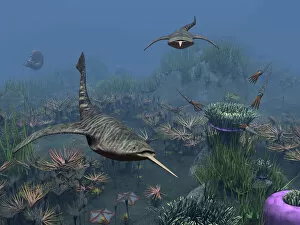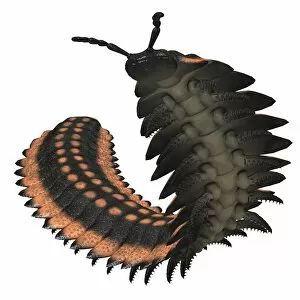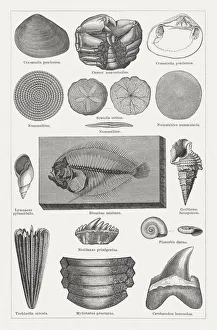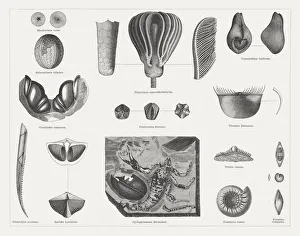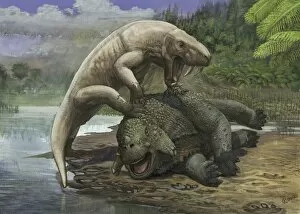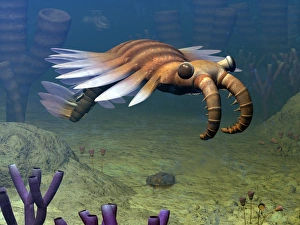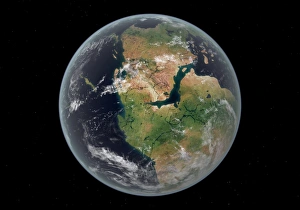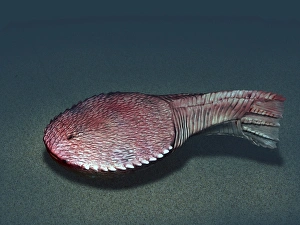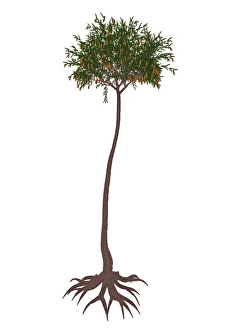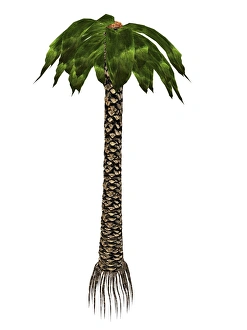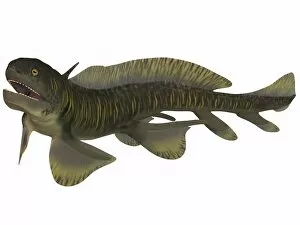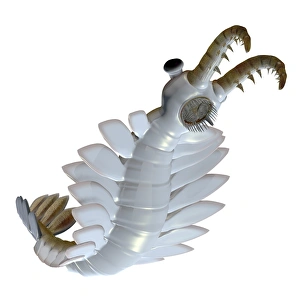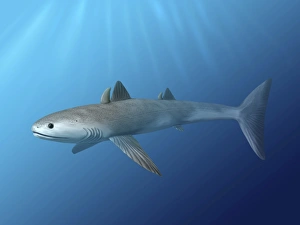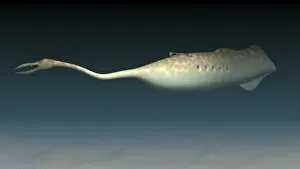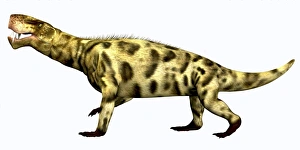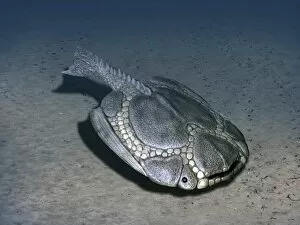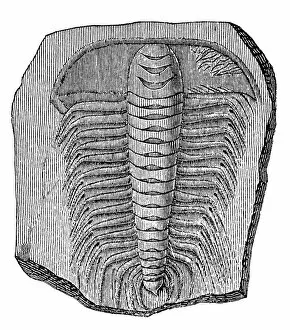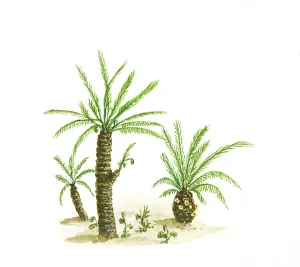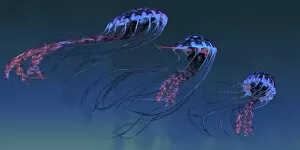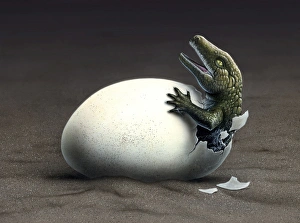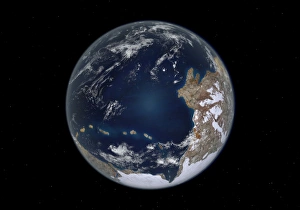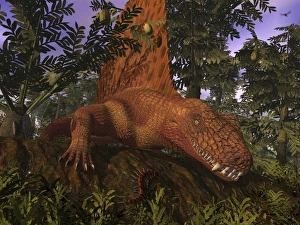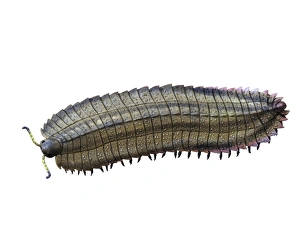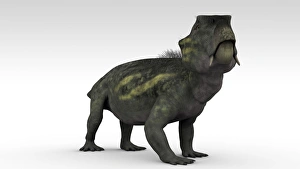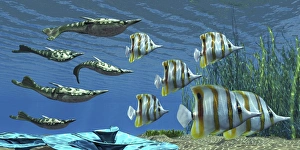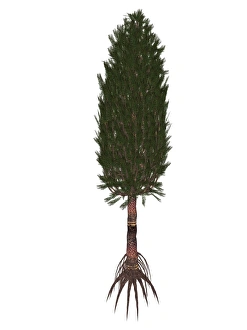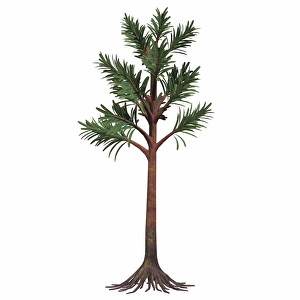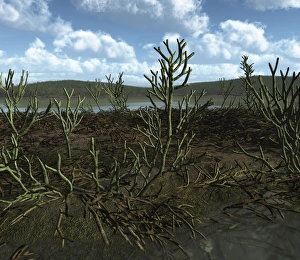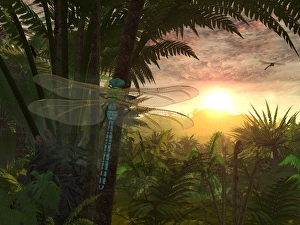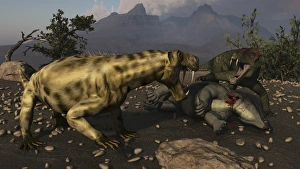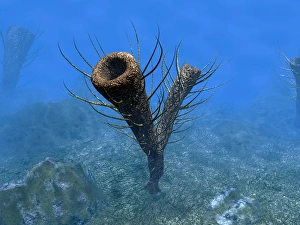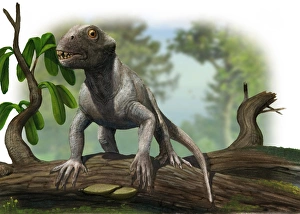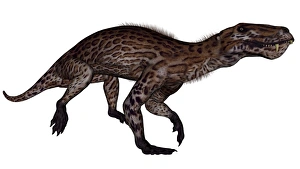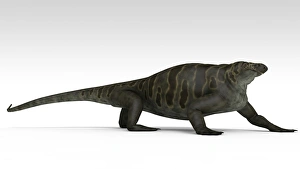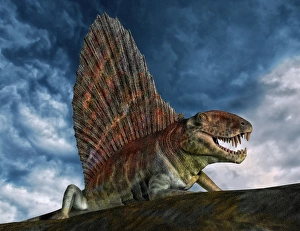Paleozoic Era Collection
Step back in time to the Paleozoic Era, a period of ancient wonders and extraordinary creatures
All Professionally Made to Order for Quick Shipping
Step back in time to the Paleozoic Era, a period of ancient wonders and extraordinary creatures. In this captivating snapshot from history, Doryaspis gracefully swims amongst a vibrant bed of Anthozoa, showcasing the mesmerizing beauty of marine life during this era. The Tertiary fossils captured in wood engravings published in 1878 offer us a glimpse into the past, allowing us to marvel at the intricate details preserved over millions of years. As we delve deeper into this remarkable epoch, we encounter Carboniferous fossils depicted through stunning wood engravings also from 1878 – a testament to the enduring fascination with these prehistoric relics. In an awe-inspiring scene, an imposing Inostrancevia launches its attack on a formidable Scutosaurus, highlighting the fierce predator-prey dynamics that shaped life during the Permian age. Meanwhile, an Anomalocaris ventures across an ocean floor frozen in time – providing insight into Middle Cambrian ecosystems and reminding us of Earth's ever-evolving nature. Edaphosaurus pogonias emerges as another intriguing figure from this bygone era – its unique characteristics capturing our imagination and sparking curiosity about life forms long extinct. Ctenaspis takes center stage as one of Norway's jawless fish representatives from Early Devonian times; their presence reminds us that even beneath our feet lies evidence of ancient aquatic realms teeming with diverse species. The image shifts abruptly to showcase male Homo erectus running swiftly through his environment - symbolizing human evolution's early stages within this vast timeline. A Tiarajudens eccentricus stands tall amidst other inhabitants from the Paleozoic Era; its distinctive features make it stand out among its contemporaries. Anomalocaris reappears once more but now representing the Cambrian period within Paleozoic history—an iconic creature whose existence challenges our understanding of early complex organisms.

